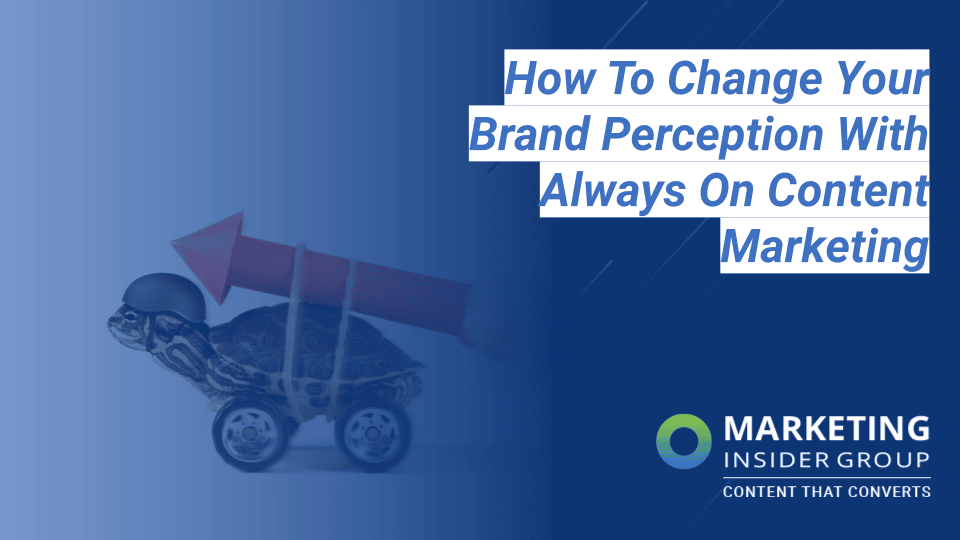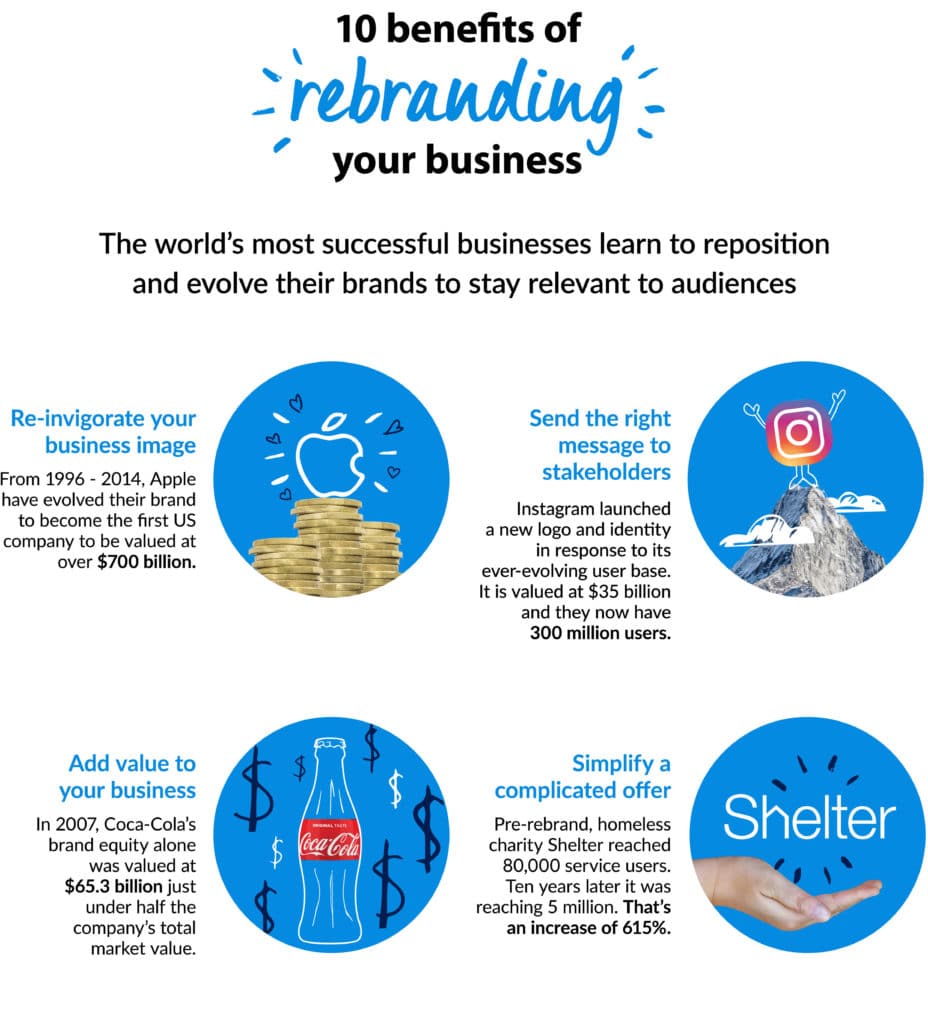
How to Change Your Brand Perception with Always-On Content Marketing
Always-on content marketing is the only way to build new relationships for a brand.
As my good friend Carla Johnson points out, you need only look at the rebranding MGM Resorts’ Las Vegas properties underwent to see what magic content marketing can work. If you’ve ever watched old movies set in Vegas, you know that all the romance revolved around the high rollers.
Entertainment entered the picture in the ’50s and ’60s when the Rat Pack burst onto the scene – but family-friendly entertainment? Let’s just say that it was scandalous in most parts of the country if you took your kid to Vegas.
That all changed when Beverly Jackson came onto the scene in 2015. With the central theme of entertainment, she produced content that expanded each of its hotels’ appeal to new customer segments, including families with young kids, with one hotel – Circus Circus – now on track to compete with Disney for the family market.
But that kind of sea change didn’t come about with a one-off campaign – or even a series of them. It came about with a sustained flow of content tailored to each property’s target customers, delivered on a multitude of channels.
Always on marketing works. Always on content marketing works ever better, especially when trying to grow your brand.
Quick Takeaways:
- Research your new target market and their needs.
- Differentiate your new brand voice from your previous one.
- Publish quality content and sustain/increase the pace of publication.
- Use data, innovation, and a consistent content strategy to change your customers’ perceptions.
That kind of sustained content marketing can differentiate your brand – not only from its competitors but also from its former self. The same content marketing principles that set you apart from others in your field work in a rebrand or expansion as well. Use these steps to change your target customers’ perceptions of your brand:
Position Your New Brand Image Strategically
Do some deep research on your new target markets, as well as trends within those groups. For example, the MGM resort hotels we mentioned earlier looked at the family-friendly giant Disney as a model, looking at what worked and what didn’t to position themselves as a major player in the family resort niche.
Furthermore, it looks like MGM has researched some of the leading-edge trends in the industry as well. The chain looks to corner the market in the autism-friendly resort sector by becoming the first resort to obtain an Advanced Certified Autism Center (ACAC) designation from the International Board of Credentialing and Continuing Education Standards (IBCCES).
With the increase in autism diagnoses in American families, this strategy should work to position the chain as a leader in this niche.

Differentiate Your Brand Customer Experience from its Former Self
For more than a century, Coca-Cola’s flagship cola has led its branding. With one exception: New Coke – a 1980s marketing disaster caused by the company’s dropping its signature beverage.
After declining revenues between 2012-2017, the company needed to extend its brand beyond cola. Rather than repeat the brand’s colossal misstep, Coke’s CEO kept the flagship product and created new content to showcase its non-sparkling beverages, using influencers, employee messaging, and even Indiegogo to create buzz.
The lesson: think about your audience and what they want. Create content in the formats they want. And use influencers and employees to share it out.
Publish Quality Content Consistently
Whatever the niche you want to expand into, you need to create content that informs your potential customers, helps them conquer their challenges, and answers their questions.
Use data analytics to discover more about who they are, what problems they face, when and where they spend their time online, and keep listening on social media to learn what questions they have.
Let those factors determine the content you’ll publish. Keep all your content consistent with your new brand image – and publish often, at least two to four times a week.
Every week. If you can’t keep up with the demand, outsource your content creation to a content marketing agency. When you’re rebranding, a consistent, sustained effort is critical to build awareness quickly.
Flirt with Trends, but Marry Long-Term Brand Strategy
Make your owned online assets the permanent parking spot for your content. Don’t make the latest social media flash in the pan be the place where you invest most of your time and money.
Those who invested most of their branding in MySpace, for instance, would have had to do an expensive about-face when that platform faded into obscurity.
Keep your best content on your websites and use your social media and other third-party platforms as a dash of spice. That way, you can easily shift your strategy once the next trend comes along.
Use Innovative Strategies to Reach New Audiences

Let’s say you make toys, and Disney taps you with the chance to create a line of Star Wars toys. You want to expand your brand into the adult sci-fi/anime market.
That kind of move requires a radically different brand image than your kiddie line. So, you’ll need to start posting on channels that appeal to an adult audience.
Whether you create a brand-new website or create a separate section on your current website, you’ll need a new voice to reach the sci-fi/anime community. A sophisticated brand voice, paired with messaging on forums and social media groups that serve the geek community, will go a long way toward reaching your new customer segment.
However you rebrand or expand, you need to create a brand voice that speaks to them in their language and find new ways to reach them.
Use Customer Segmentation to Drive Your Content Distribution
Whether you’re expanding your brand into a new market or rebranding altogether, it’s always a strategic move to segment your customers by their location, type of products they’re likely to buy, and where they are on their customer journey.
Buyer personas, particularly for the new segments, can help your creative team craft content that appeals to their particular interests.
It’s even more important to get your message just right when you change your brand image. That’s why it pays to put in an extra effort to build an accurate buyer persona for your new customer segments.
Then, distribute your content on the channels they hang out on, as well as on your website.
Finally, Listen and Measure
Once you’ve published and distributed the new content that positions your brand in a new light, it’s time to listen to what your followers are saying about your brand on social media.
Look for indications in their comments that show that they’ve shifted their perceptions in line with your shift in brand direction.
Then, dive into the data to see how your new target customers have reacted to your new branded content. Are they converting? Are they moving along the steps in the buyer’s journey?
Look at your best-performing content, repurpose it into another form, and republish it. With your best performers in front of you, tweak those pieces that aren’t performing to better reflect your brand’s new direction and your customers’ needs.
Whether you’re rebranding or broadening your perspective, the right content can help drive your brand message home. If you are ready to get more traffic to your site with a sustained content marketing strategy with top-quality branded content, check out our Content Builder Service. Set up a quick consultation, and I’ll send you a free PDF version of my books. Get started today – and generate more traffic and leads for your business.






